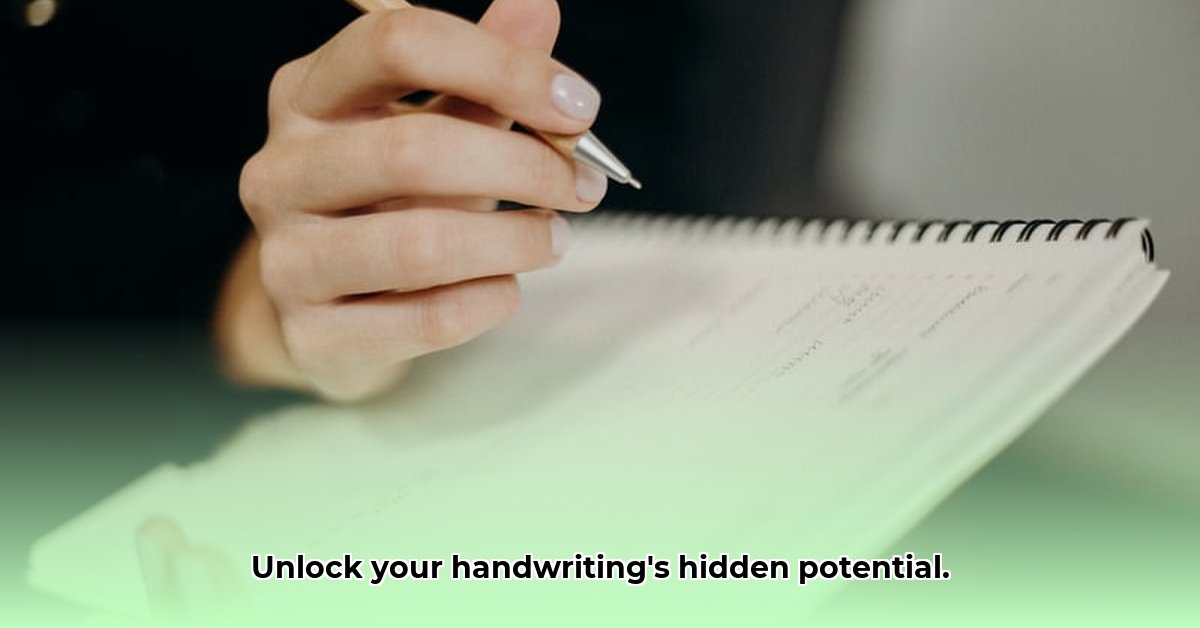
Want to transform your handwriting from messy to magnificent? Consistent letter height is the key to achieving a polished, professional look. This guide provides simple, effective exercises to help you achieve even, beautiful lettering. For more advanced techniques, check out this helpful guide on letter height. Let's get started!
Understanding Letter Height
Before we dive into exercises, let's define the key elements that determine your letter height:
- X-height: The height of your lowercase letters like 'x', 'a', and 'o'. This is your baseline.
- Ascenders: The parts of letters like 'b', 'd', 'f', 'h', 'k', and 'l' that extend above the x-height.
- Descenders: The parts of letters like 'g', 'j', 'p', 'q', and 'y' that extend below the x-height.
Why is consistent letter height important? Simply put, it dramatically improves readability and makes your handwriting more visually appealing. Uneven letter heights create a messy, disjointed look, while consistent heights create a sense of balance and harmony.
Practical Exercises to Improve Your Letter Height
These exercises are designed to build muscle memory and improve your control over letter height.
1. Grid Practice:
- What to do: Use grid paper (or create a grid on plain paper). Trace letters, ensuring each letter fits neatly within its designated squares. This helps you visually understand and maintain consistent proportions.
- Why it works: It provides a visual guide, reinforcing the correct proportions and helping your hand to maintain even sizing. It's like training wheels for your handwriting!
- Pro-tip: Start with lowercase letters to master the x-height, then move on to ascenders and descenders.
2. Height Markers:
- What to do: Draw three light horizontal lines: one for the x-height, one for the ascender line, and one for the descender line. Use these lines as guides while writing.
- Why it works: This provides a clear visual framework, helping you judge the height of your letters accurately.
- Pro-tip: Use a light pencil so you can easily erase the lines later.
3. Ascender and Descender Drills:
- What to do: Focus on practicing ascenders and descenders separately. Write rows of 'b', 'd', 'h', 'k', 'l' and then 'g', 'j', 'p', 'q', 'y', paying close attention to their height and consistency.
- Why it works: Isolating these elements allows you to build muscle memory for these specific letter parts.
- Pro-tip: Try writing words containing only ascenders or descenders to practice flow and rhythm.
4. Style and Tool Experimentation:
- What to do: Try writing the same sentence using different writing styles (print, cursive) and tools (pens, pencils). Observe how these changes affect your letter height control.
- Why it works: Different tools and styles require different techniques, improving your overall control.
- Pro-tip: Pay attention to your grip and pressure; these significantly impact your letter heights.
Troubleshooting Common Handwriting Issues
Even with practice, you might encounter challenges. Here's how to address some common problems:
| Problem | Solution |
|---|---|
| Inconsistent Pressure | Relax your grip. A tense grip leads to uneven lines and inconsistent letter heights. |
| Incorrect Grip | Experiment with different pen holds to find one that's comfortable and allows for better control. |
| Hand Fatigue | Take breaks. Tired hands are less precise. Short, frequent writing sessions are more effective. |
| * Sloppy Letters | Focus on clear strokes and proper letter formations. Master the fundamental shapes of each letter. |
Building a Consistent Handwriting Habit
Consistency is key! Here’s how to make improving your letter height a regular habit:
- Daily Practice: Devote a few minutes each day to practice the exercises. Small, consistent effort yields significant results.
- Real-World Application: Use your new skills in everyday writing: journaling, note-taking, and letter writing will reinforce your improved technique.
- Self-Assessment: Regularly review your writing to identify areas needing improvement. Self-reflection is crucial for targeted progress.
Remember, improving your letter height takes time and practice. Be patient, celebrate your progress, and soon you'll be writing with consistent, elegant letters. You've got this!